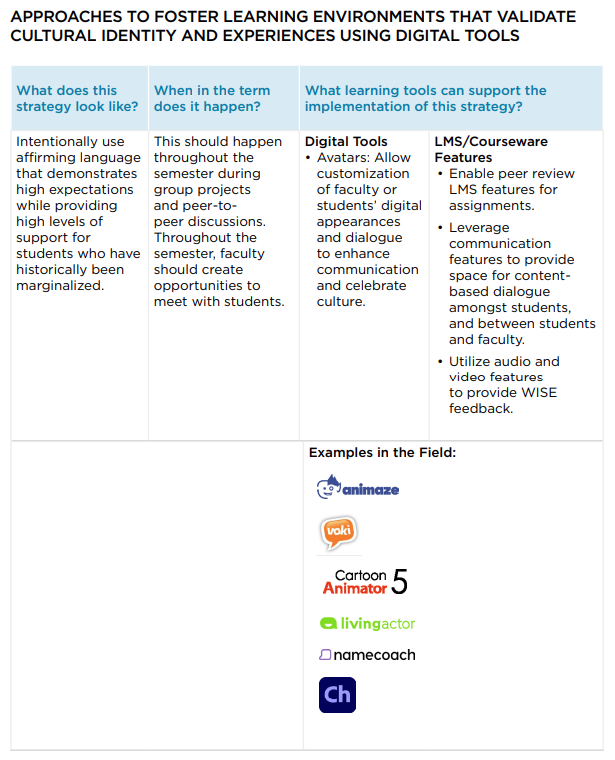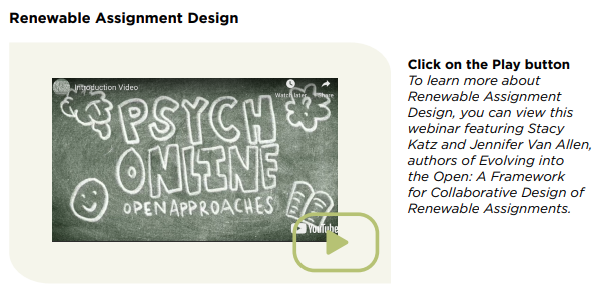The co-authors of a new series of equity-minded digital learning strategy guides say the central challenge in developing them was synthesizing an abundance of material into something practical for college faculty. While research about culturally responsive teaching and learning, social justice education, professional learning, and open pedagogy has been extended and deepened in recent years, faculty are eager to learn practical ways to implement equity-minded digital learning strategies in their day-to-day teaching practices.
“We often hear folks saying, ‘Yes, I get the theory, I get the ideas and concepts. Now how do I put this into practice?’” says H. Ray Keith, Associate Director for Teaching and Learning at Achieving the Dream. “This series unpacks those instructional strategies for faculty.”
Keith and Sarah Kinnison, Associate Director of Program Development at Achieving the Dream, in partnership with Every Learner Everywhere, were among several experts who contributed to the Putting Equity Into Practice series. The four user-friendly guides support faculty and course designers implementing proven equity-minded and student-centered learning strategies.
Each guide includes a summary of relevant research, resource lists, ways to apply established frameworks, “how to” examples, reflection activities, and inspiring examples from the field. They also identify digital learning tools that faculty can apply to particular activities.

From Putting Equity Into Practice: Culturally Responsive Teaching and Learning
The guides are a follow-up to an earlier series of three digital learning instructional strategy guides on data-informed instruction, onboarding students, and digital course structure.
“This new series focuses on looking at current practices that are culturally responsive, and culturally sustaining and affirming, while utilizing digital tools and coursewares to enhance student learning,” says Keith.
The four equity-minded digital learning strategy guides in the series are:
- Putting Equity Into Practice: Open Pedagogy, which helps instructors use renewable assignments and co-created and student-created content that incorporates students’ cultures, lived experiences, and diverse perspectives into the course.
- Putting Equity Into Practice: Social Justice Education, which helps instructors confront biases and create anti-racist environments where students can authentically engage in learning in ways that are meaningful to them.
- Putting Equity Into Practice: Equity-Minded Professional Learning, which helps instructors develop specific practices that value, embrace, and build equitable learning spaces.
- Putting Equity Into Practice: Culturally Responsive Teaching and Learning, which helps instructors develop teaching practices that acknowledge and use students’ cultural knowledge and frames of reference.
The series also includes a short introductory document outlining the goals, structure, and context for the guides.
One of the greatest advantages of the Putting Equity Into Practice series, says Kinnison, is their structure, which allows the reader to engage with the guide individually or as a set and in ways that advance their learning.
Creating the guides
Because the co-authors were starting with an abundance of research and commentary on these topics, their primary challenge was developing practical guides that were grounded in evidence but also actionable and digestible. Keith says their criteria when selecting influences were what was current in the field and what has been proven to lead to more equitable results for Black, Latino, and Indigenous students.
Keith says early drafts of the guides presented at professional conferences received positive feedback, particularly on topics recently getting broader attention in higher education, such as culturally responsive teaching and social justice education.
“Co-authors Michele Hampton and Ruanda Garth McCullough expressed the need for this work in the field,” Kinnison says. “These topics have been widely discussed in K-12, and more recently higher education has begun to adopt these approaches to teaching and learning to better support student success for marginalized student groups.”
An interactive experience

From Putting Equity Into Practice: Open Pedagogy
While planning the Putting Equity Into Practice series, the co-authors wanted to create material that was an interactive and engaging experience. They decided to embed links to video files in the PDFs of the guides to expand on key topics. The guides also invite educators to reassess how tools they may already be using can be implemented in new ways to support equitable teaching and learning.
“We wanted to make sure this effort would have long-term impact on student experiences and outcomes,” Kinnison says. “We felt like the guides should be a living, moving, and interactive tool that would jump off the page and into the courses.”
This interactive approach is intended to make access to these strategies easier than ever for faculty. Keith suggests that the guides can be used to support faculty in becoming best practitioners: “These guides intentionally provide evidence-based instructional strategies, digital tools, and student-centered pedagogical approaches that advance equity and culturally responsive teaching and learning that leads to more equitable outcomes for students in higher education.”
Download the Equity-Minded Digital Learning Strategy Guide Series


